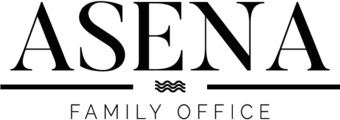FOCUS ON FIRST-QUARTER RESULTS
Latest figures seem to suggest that the growth rate of new Covid-19 cases is flattening, while news of governments preparing exit strategies from the lockdown is buoying financial markets. In the US, this blueprint has been dubbed “A Framework for Re-Opening America”, dividing the country up into different zones that could be opened or would remain closed depending on the ongoing threat of widespread contagion. The extraordinary amount of support stemming from governments and monetary authorities at the moment is doing a great deal to curb volatility. Equity markets have even been rising in recent days, driven ahead by consumer, pharmaceutical and tech stocks. Tech is deemed more resilient in the current crisis, making it a prime beneficiary of the renewed risk tolerance among investors amid the apparent stabilisation of the pandemic. The QE splurge by central banks, in which the Fed has stooped to buying junk bonds, is propping up credit. Spreads have fallen sharply since the mid-March
peak, which was caused by evaporating liquidity and concerns about a surge in defaults.
Well folks, it’s reporting season, and the figures reported by groups will show the first effects of Covid-19. The signals are hardly comforting as yesterday US banks JP Morgan and Wells Fargo reported a plunge in profits coupled with massive loan-loss provisions. Profits fell 69% at JP Morgan while provisions exceeded $8 billion. Johnson & Johnson has cut its guidance, although the share price is bolstered by a higher dividend and the prospect of a Covid-19 vaccine arriving in early 2021. The IMF is predicting an unprecedented global recession for 2020 in which global GDP contracts by 3%, followed by a 5.8% recovery in 2021. The cumulative growth shortfall, estimated around USD 9 trillion, outweighs the combined size of the Japanese and German economies. In Europe, GDP is expected to fall by 7.5% in 2020 and in the US by 5.9%. In China, growth is forecast at 1.2% for 2020 and 9.2% for 2021. Obviously everything depends on how long the pandemic lasts, and that’s still hard to foresee.
The Eurogroup of Eurozone finance ministers last week agreed on an emergency support package of some EUR 500 billion, which is quite the achievement given that Italy and the Netherlands were previously digging their heels in. China’s foreign trade figures came in higher than expected, with exports falling by only 6.6% year on year in March. China’s central bank introduced stimulus in the shape of a RMB 100 billion loan facility at a rate of 2.95%. Oil prices are still under pressure, even though a production cut of 9.7 million barrels/day has been decided upon by OPEC and its allies. Surplus reserves remain huge. In this setting, gold continues to enjoy haven appeal, especially as inflation might be looming, as a corollary of central banks’ actions.
If you have any questions please contact the office on (03) 9670 6070.
